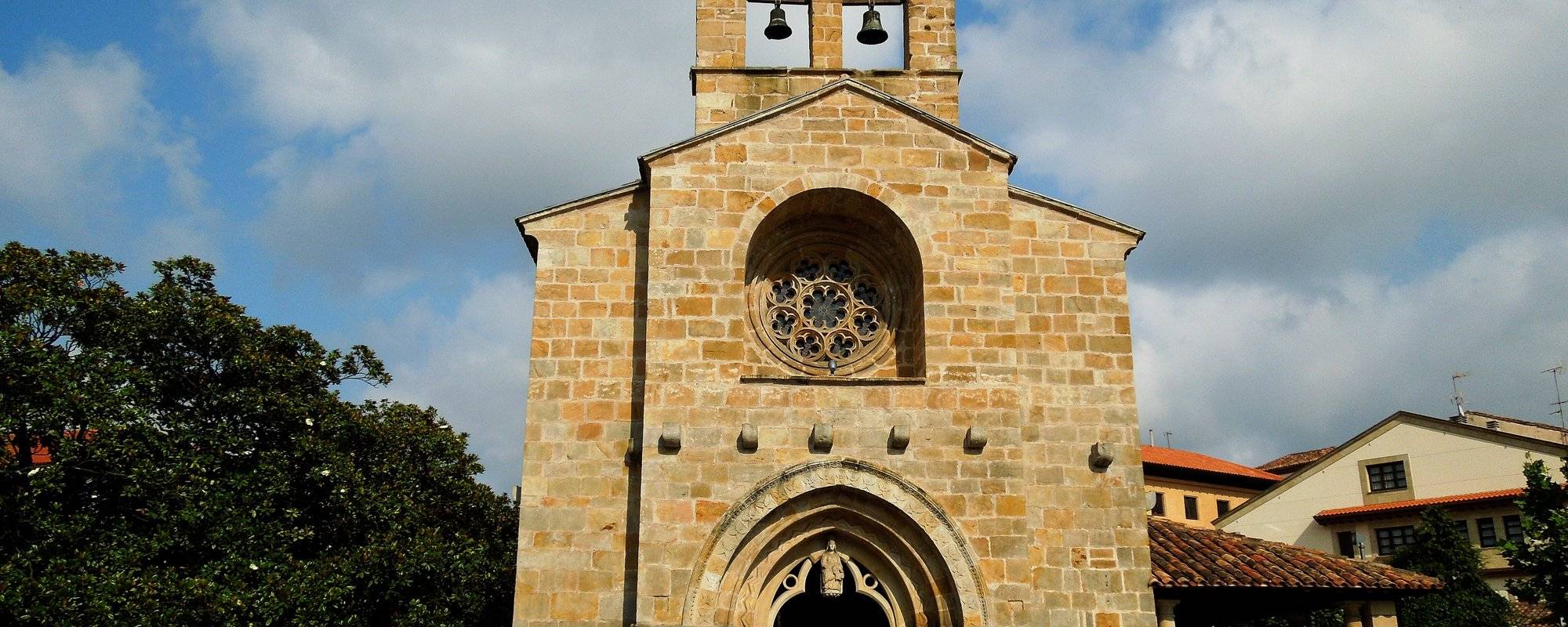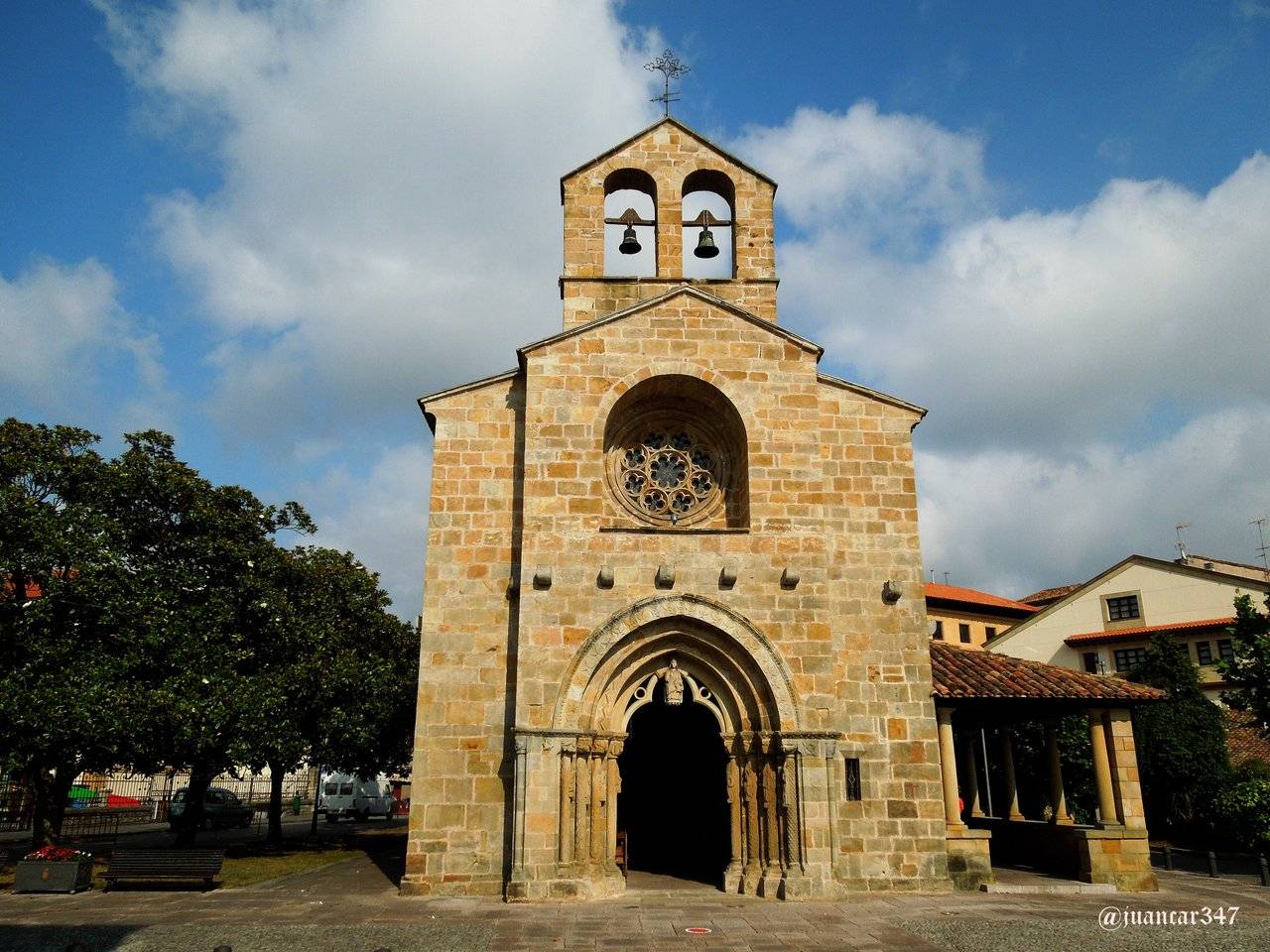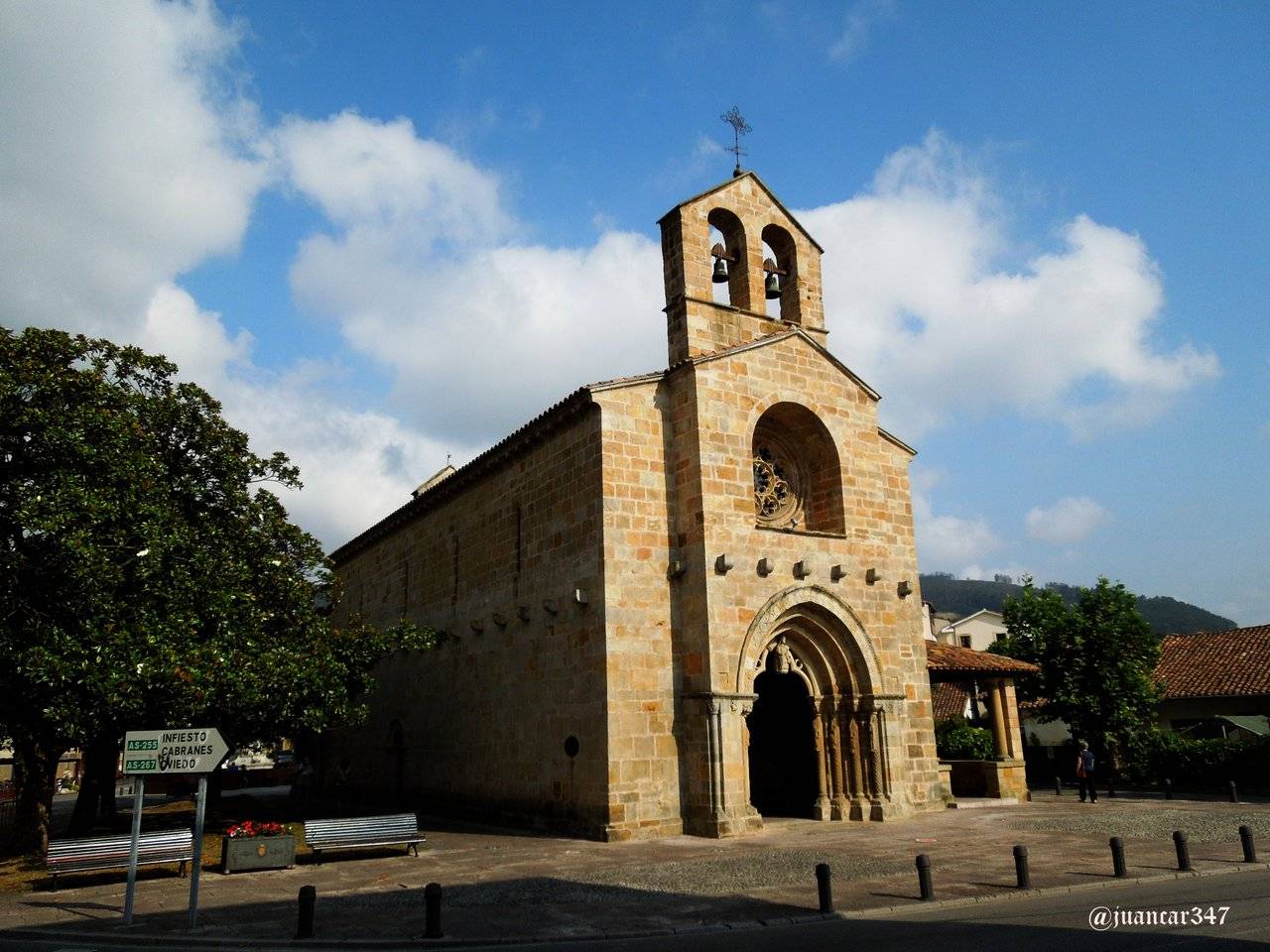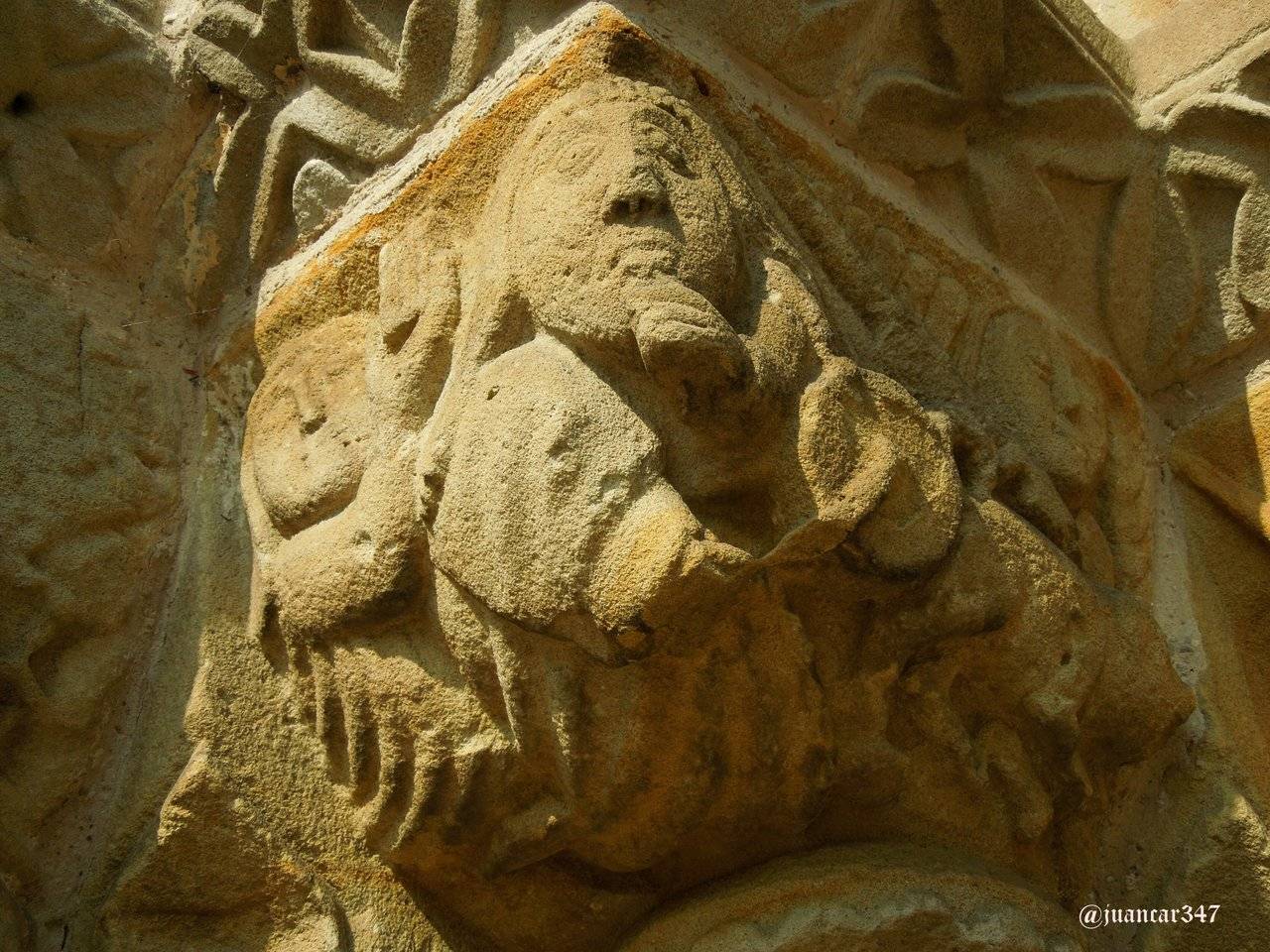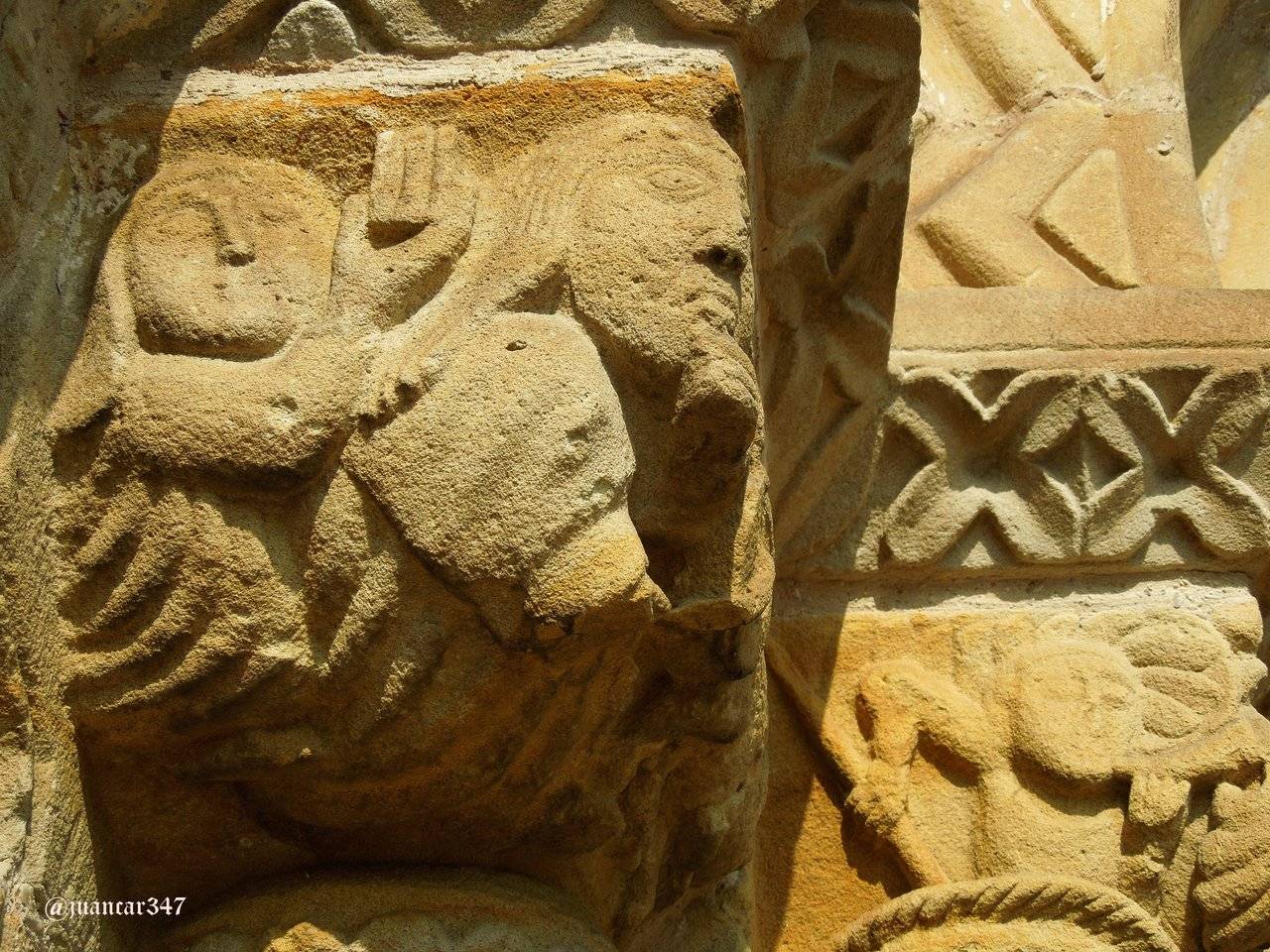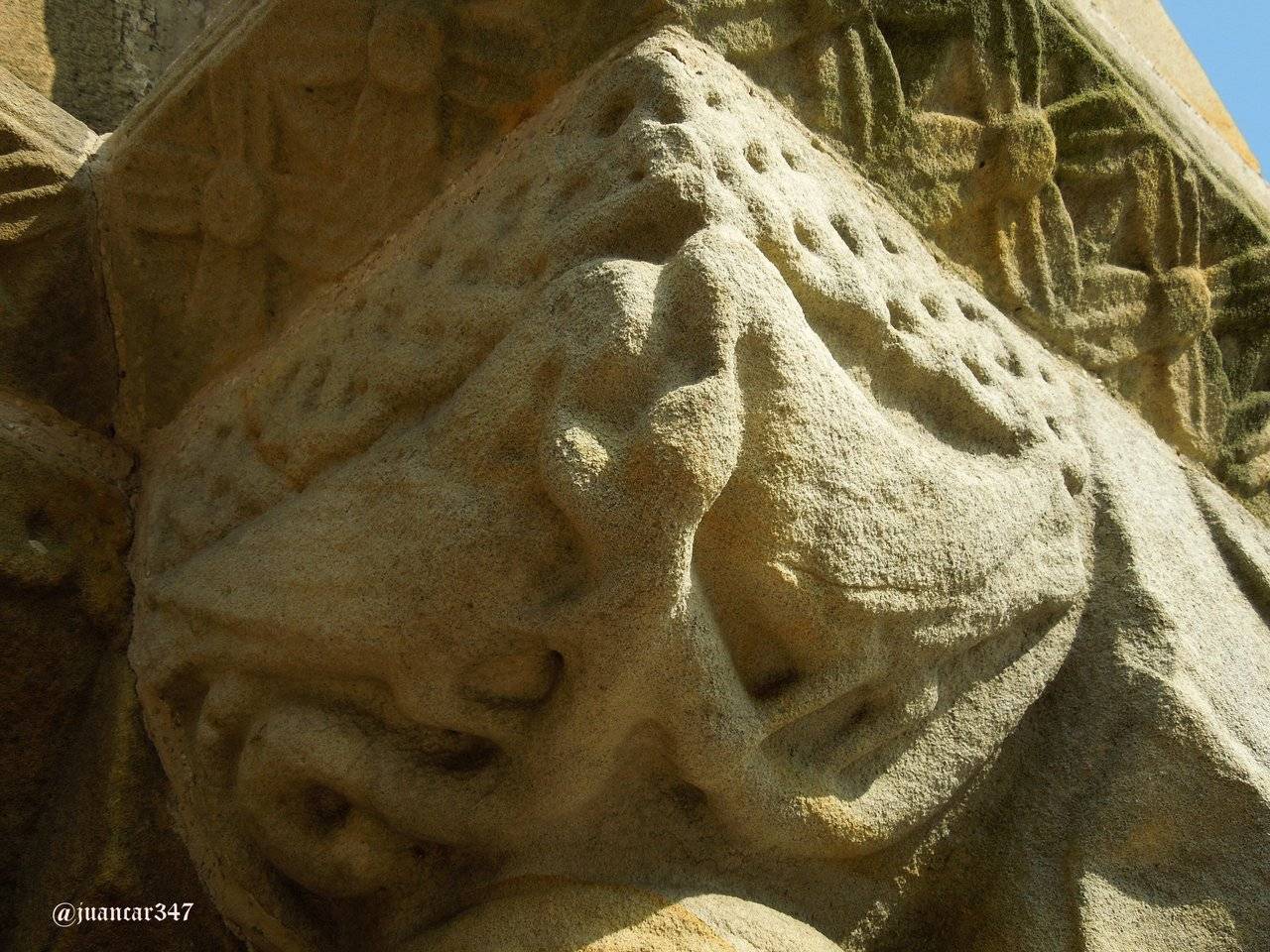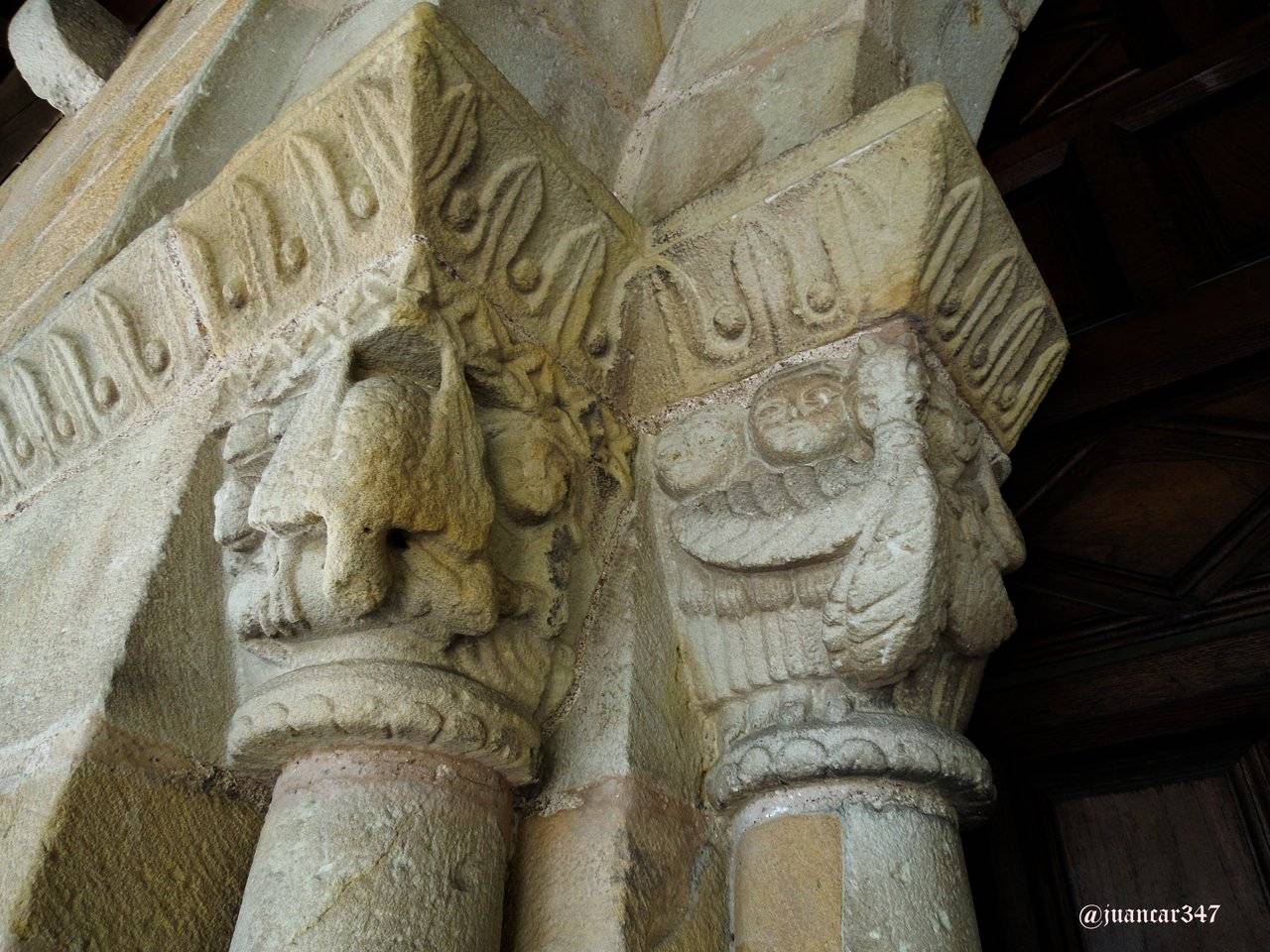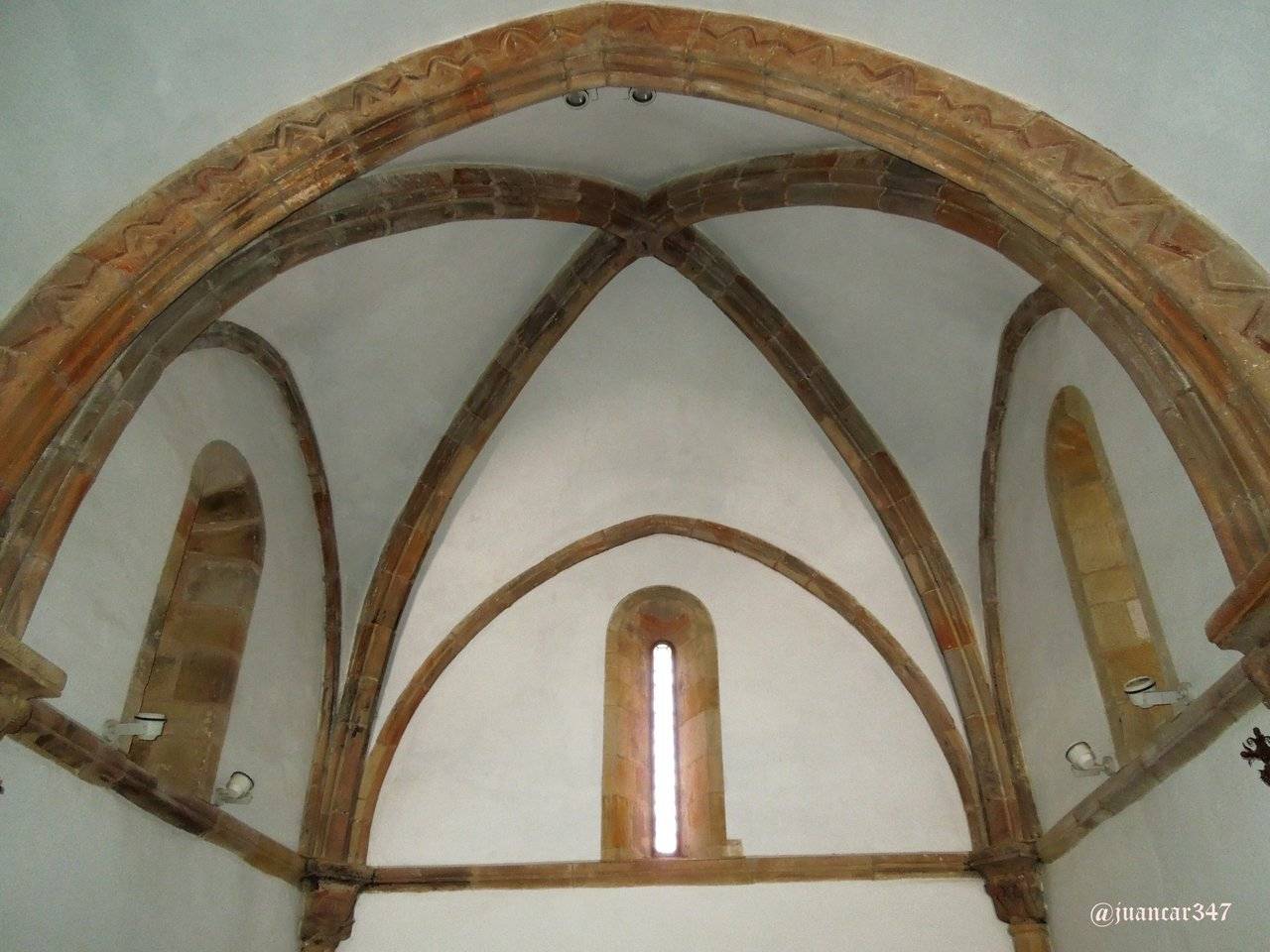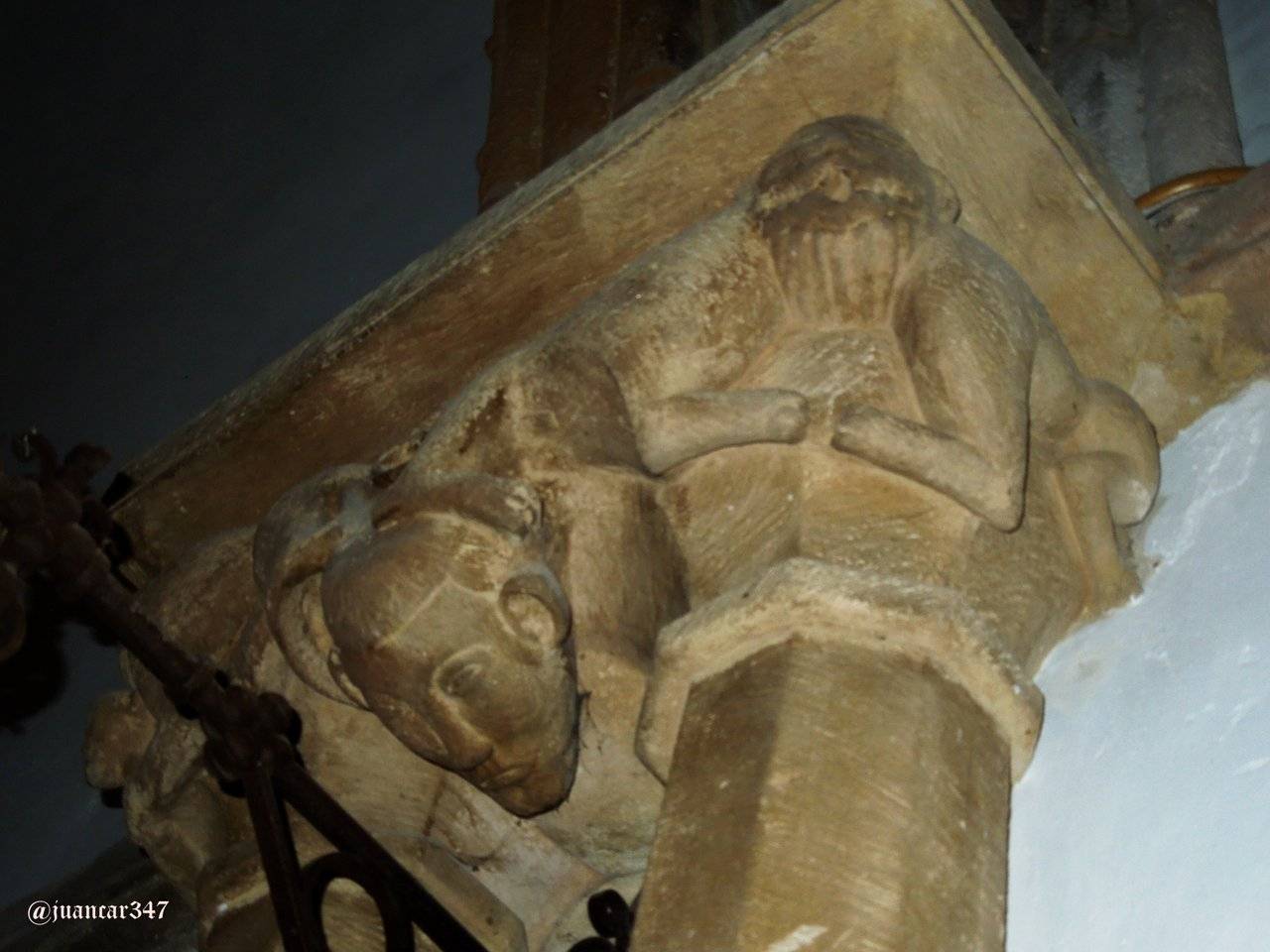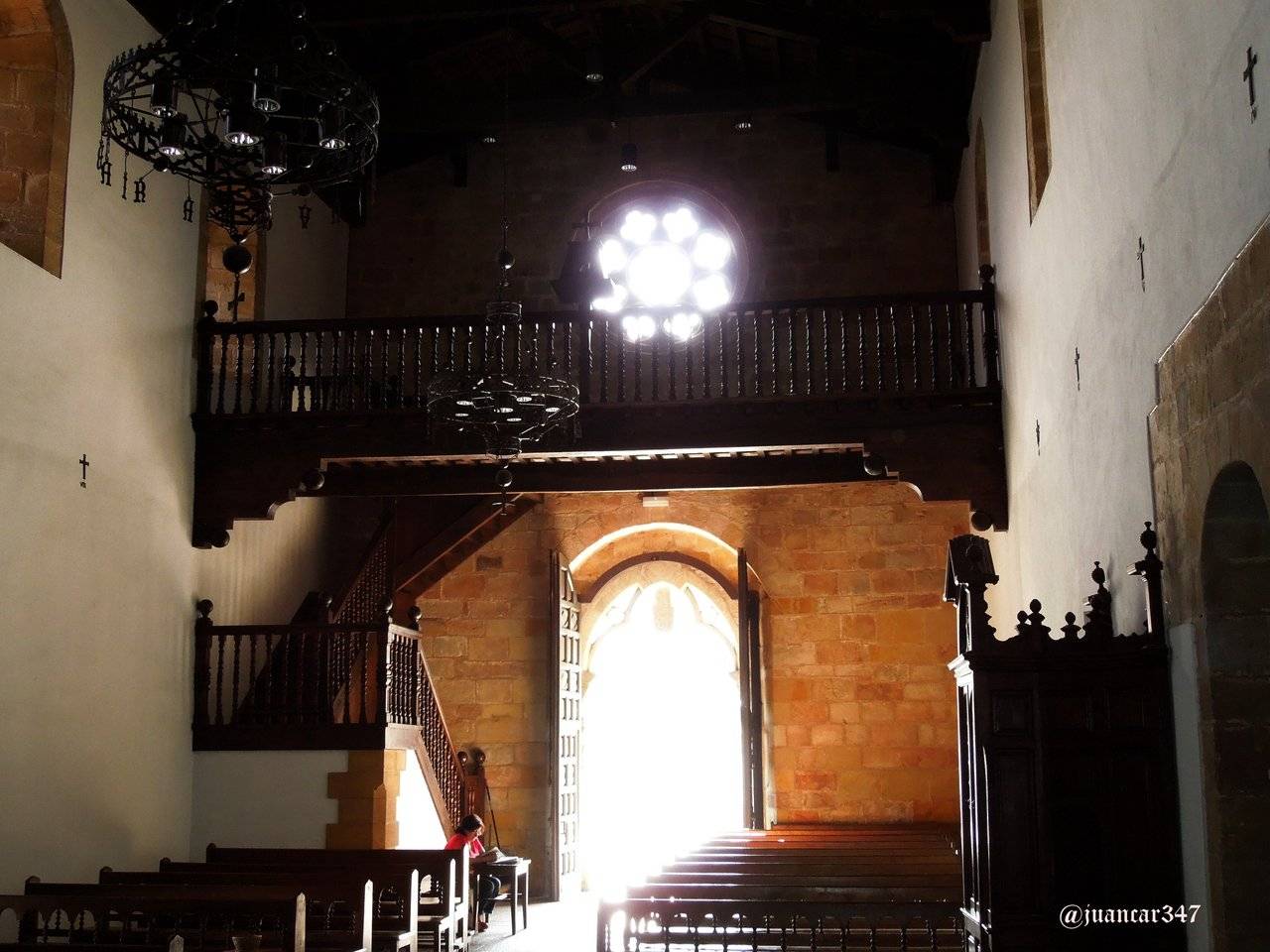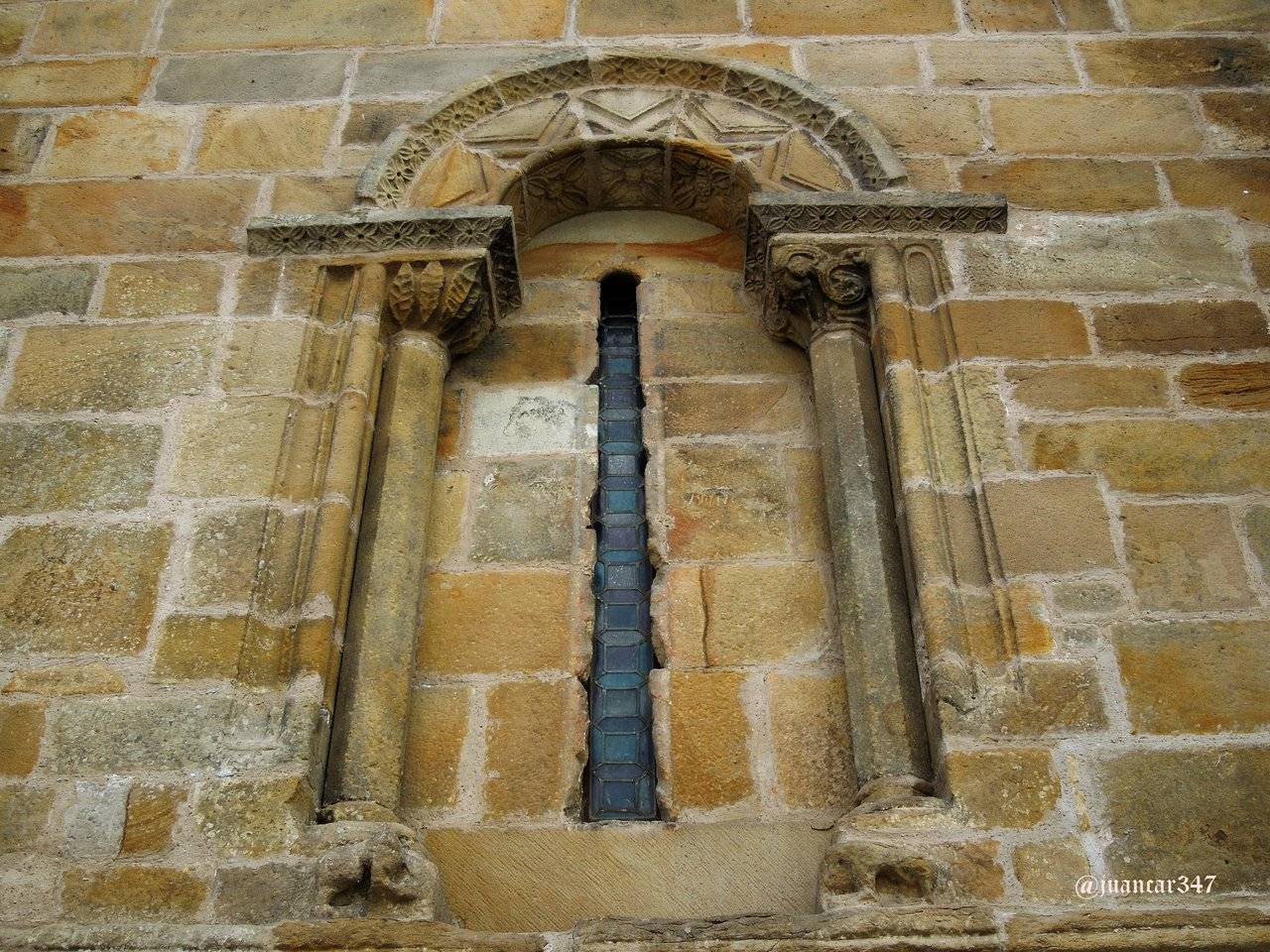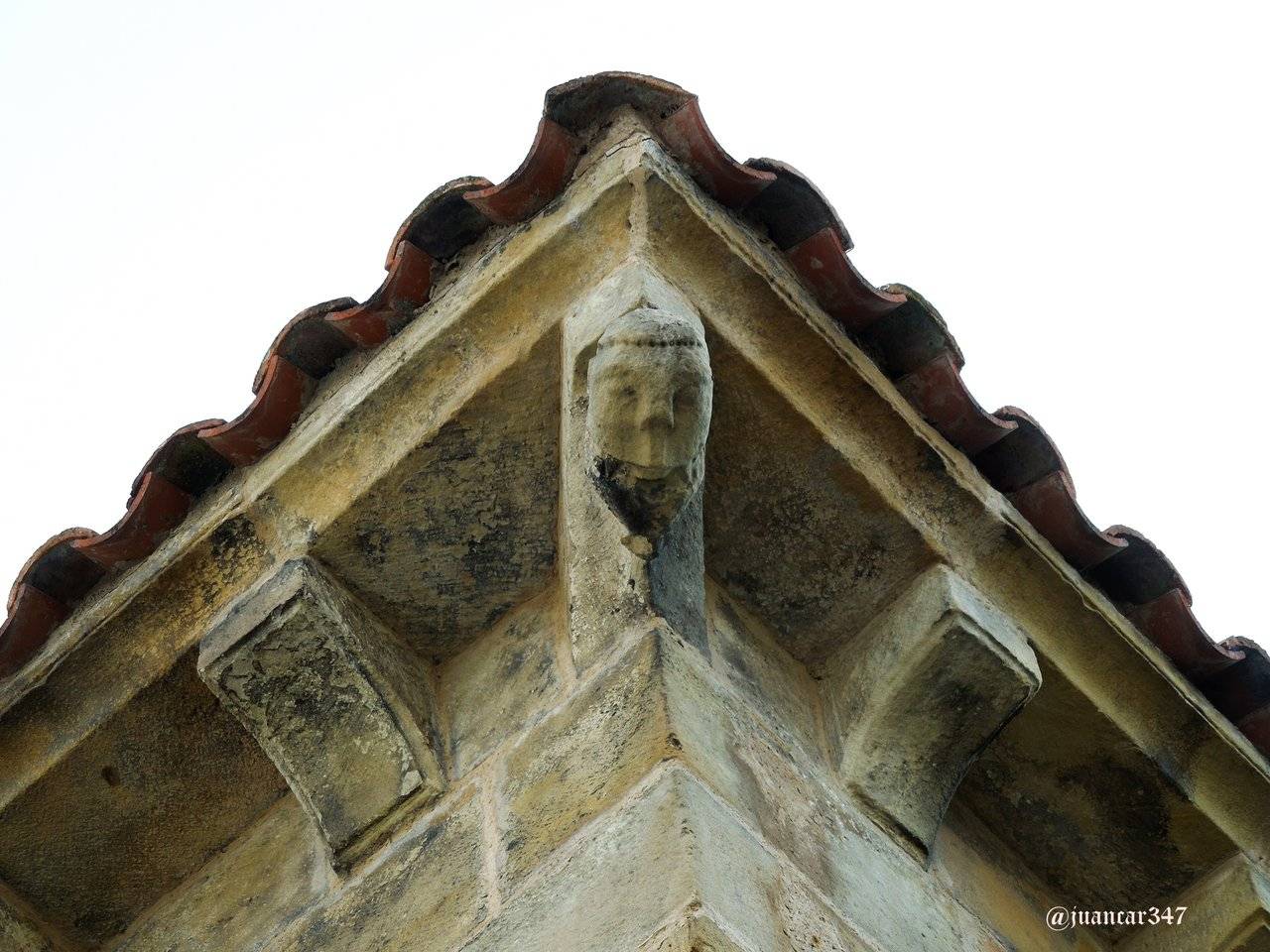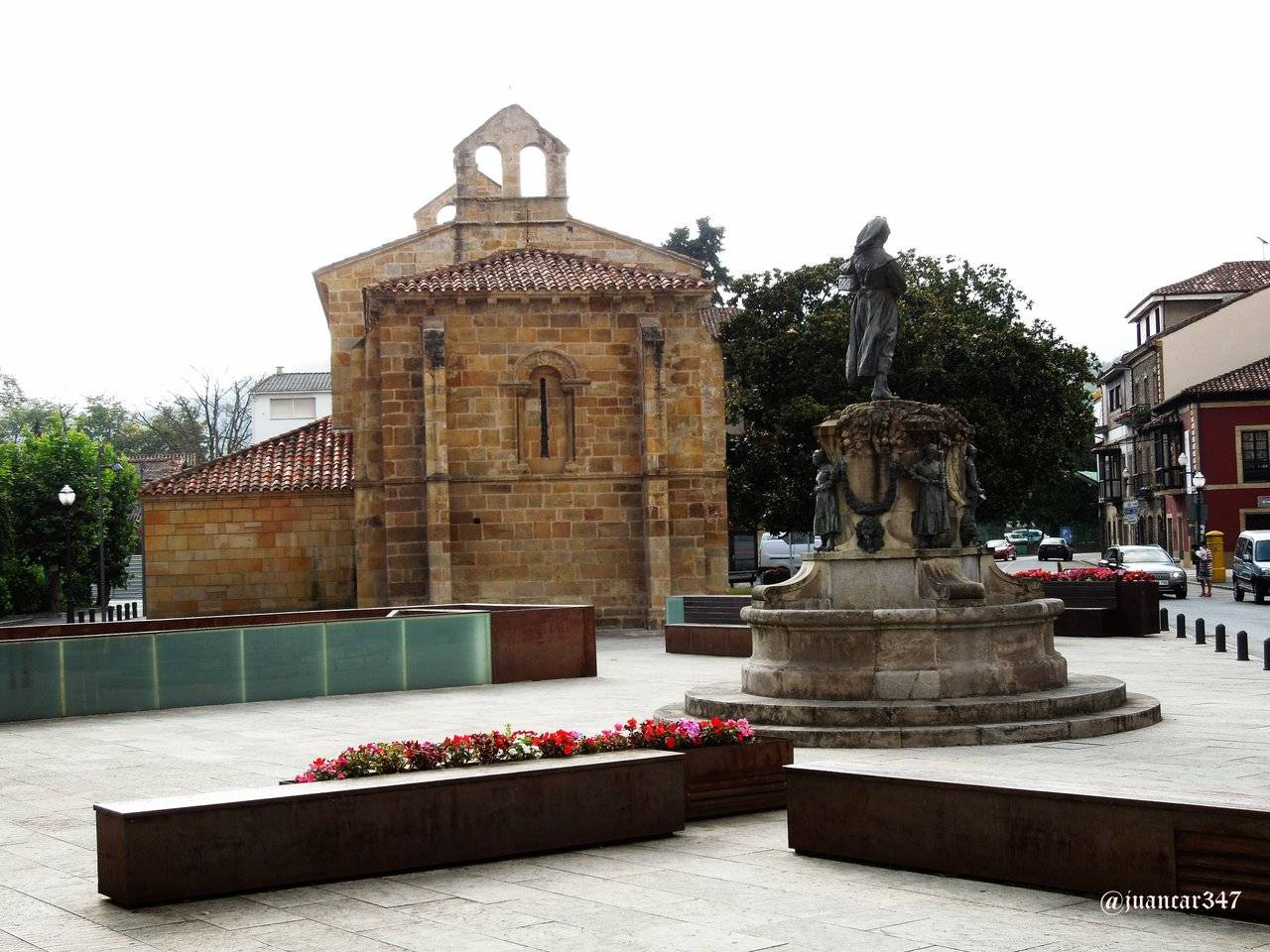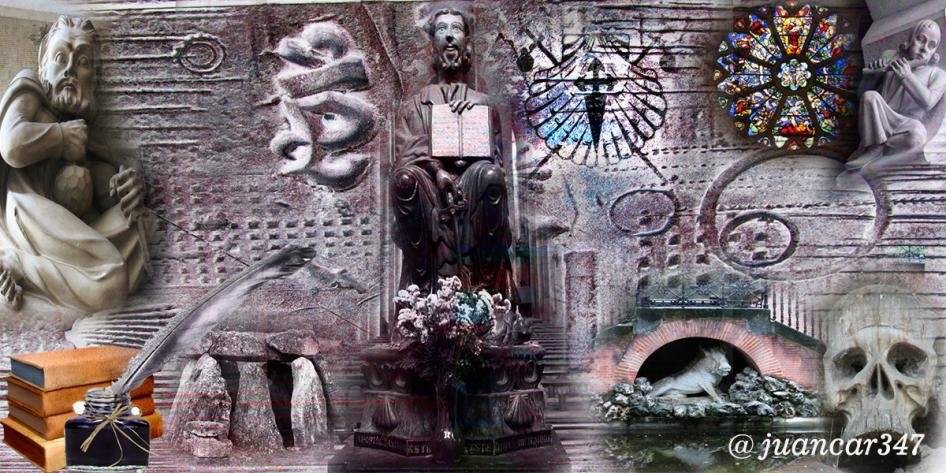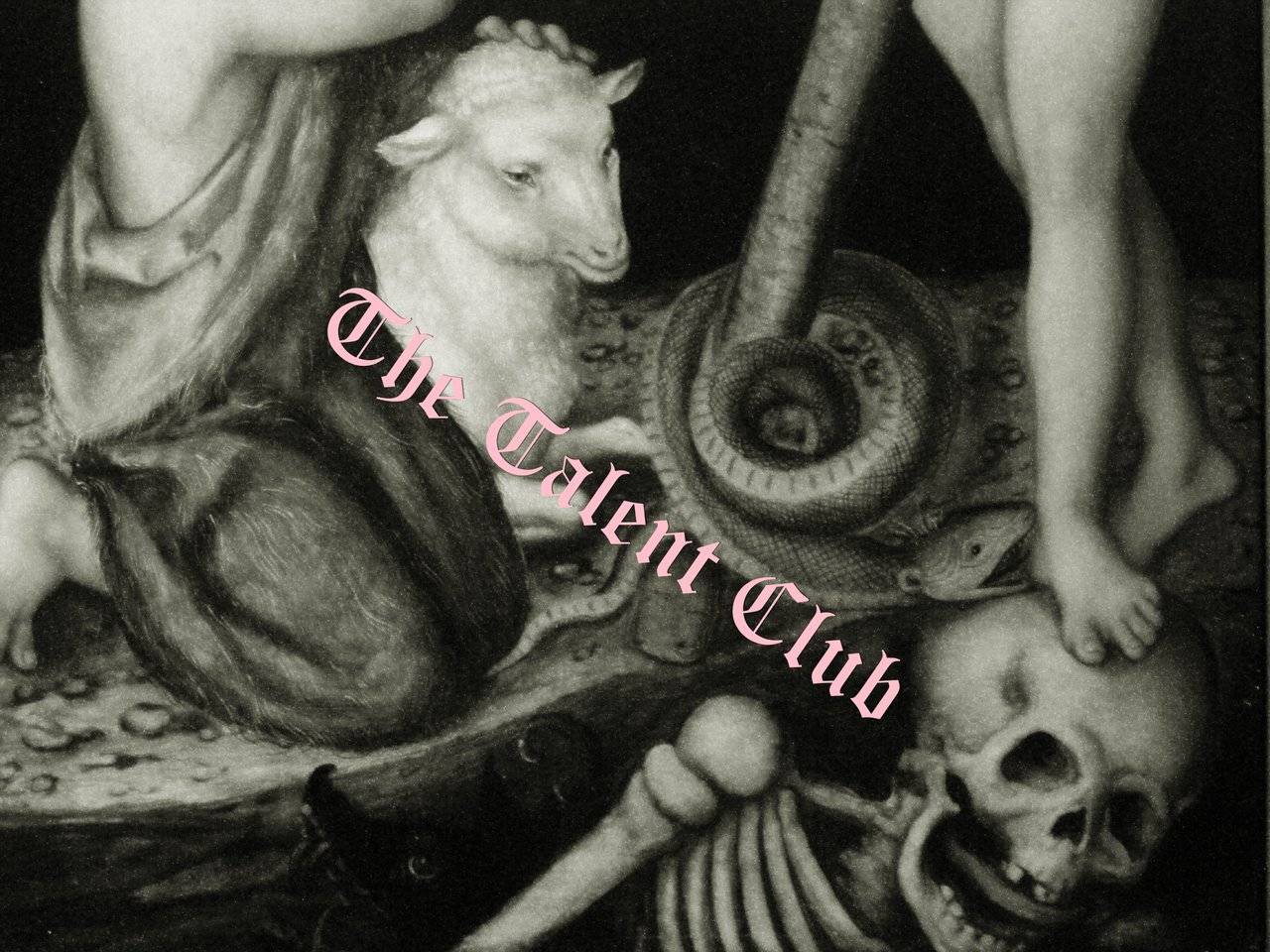Santa María de la Oliva: stone, alchemy and symbolism
One of the most important focuses of the Principality of Asturias, in terms of remarkable elements of the so-called Asturian or Pre-Romanesque Art, and even also Romanesque, is located in this so-called Comarca de la Sidra, the old Maliayo; that is, the Villaviciosa Council.
Cradle of illustrious men, like the poet Canedo -whose house, including shield, still stands- and of stables of an ancient lineage -as the symbolic language of the birds demonstrates, which underlies the varied and rich arrangement of his noble coats of arms -, the urban center of Villaviciosa conserves, like a true historical treasure, not only that remote house of Gothic references where he spent the first of the insatiable Austrias that governed the country -Carlos I of Spain and V of Germany-, after that a storm forced the ship in which he traveled to take refuge in the picturesque port of Tazones, but also, one of the great jewels of the Asturian Romanesque, which are still preserved, more or less intact, despite the multiple vicissitudes suffered in certain periods of History: the church of Santa María de la Oliva.
Located a few meters from the Teatro Riera -at present time, turned into an Information and Tourism Office-, right at the crossroads of roads, which directs locals and strangers in directions such as Oviedo or Gijón -in reality, the proximity of the The Santander motorway makes it a strategic point from which to cross the magnificent Asturian coast from one end to the other-, the church of Santa María de la Oliva, dated at the end of the 13th century, not only preserves in its dedication suspicious references that They remind us of other similar constructions erected in different parts of the Peninsula, but also, based on their extraordinary resemblance, allow us to speculate with the possible authorship of a certain religious-military order of sad memory, such as the Order of the Temple, whose presence in Asturias, to tell the truth, and given the terrible lack of documentation, it is not fully shared by historians, who prefer to ignore it as a general rule.
That is why, based on its similarity, as well as the curious detail, of sharing dedication, the Portuguese temple of Santa Maria de la Oliva or two Olivais is worth mentioning, and to a lesser extent, but keeping a certain similarity in some details, that of San Felipe, located in the Alcarrian town of Brihuega, and nearby, it should be said, to the Sanctuary of a Black Virgin: the Virgen de la Peña (1).
Leaving aside the proliferation of pate crossings-an eight, approximately-engraved along the length and width of the exterior blocks of the nave, whose consecration function could be accepted without further ado, it is still a curious detail, in addition, to observe the presence of symbols others, among which stands out, without a doubt, the Star of David or Seal of Solomon, perfectly sculpted on one side of the main portico of access.
Reason that, curiously, also appears in a side of the main portico of access of the church of Santa María del Azogue, in Betanzos, Coruña where the freires of the Temple had an important task, dependent on the bailía de Faro, detail that could put Once again, that apparent predilection felt by the Templar freires was felt to be installed in the vicinity of certainly unorthodox places, among which, of course, were the Jewish quarters. But far from trying to highlight the authorship or belonging of this magnificent temple to any military order, we could focus the interest, in the amount of details that in the manner of a breviary beautifully sculpted in the stone, accumulate both outside and in the interior of the place.
Based on this rich and subtle symbolism, in which there is no shortage of hunting references, quite present in the Romanesque of the North, both Asturian and Galician (2), together with other interesting representations, it would not be difficult to speculate with that double meaning that The medieval stonemasons were as enthusiastic as followers, according to some circles, of hermetic currents, derived not only from a paradigm referring to a Higher Knowledge, which would go back to the dawn of time and from which the different civilizations were gradually nourished. , but also of certain intellectual or philosophical positions, which would be directed to all those individuals -who belonged to their own and at the same time hermetic guilds- able to understand concepts completely removed from the extreme Literalism, imposed and viciously defended by the Roman Church .
Likewise, and in certain scenes linked to the theme of hunting, as can be seen in the figure of the beater (3), the musicians connect us with a theme that is very present in Romanesque in general and on the Camino de Santiago in particular, where the Romanesque pilgrim sang a series of psalms or chants (4), which were resulting in a picaresque little in keeping with the pious sense of the pilgrimage and that could ultimately be part of those sparks of incendiary intolerance, which would connect in periods later with the concept of goliardo and debauchery and the widespread condemnation of everything that had to do with music and dance and was not aimed at praising God and the misogyny of the Church.
More enigmatic, possibly, could be other capitals, which are characterized by the presence of two well differentiated and antagonistic species, whose symbolism is often associated, as well, with Knowledge: birds and snakes.
In this sense, it is curious to observe two clearly differentiated characteristics: one in which the bird-difficult to identify-is swallowed by a beast-remember that this type of representation is insistent in the Romanesque, with the exception that, generally, it is usually a human figure that is swallowed by the beast, with which, here we can already speak of a curiosity-, and the other in which birds, in this case, ocas -an important detail, without forgetting for a moment that we are in Camino de Santiago- develop a unique combat with snakes
Two different ways of understanding Knowledge, confronted, as, mythologically speaking, there were confrontations of races, in protohistoric periods, among which we should mention the ophita race, representative, precisely, of the serpent. Interestingly, and we should consider why, this same representation, not only appears on a capital of the west or main portico, but also, it is represented on another capital of the south portal.
And it does not stop being significant, independently of the detail that this one has lost its hieratic sedentary lifestyle, the presence of a sacred, solar and traditional element, in the hand of the Gothic Virgin that is located in one of the five - interesting number - arcosolios of the interior: the thistle. The thistle, an element so representative of the ancient Celtic peoples, whose presence, in the pilgrimages of places located in the interior, as the Monsacro, is still very venerated by the people, to the point that, as the coplilla says, his gift It's still a favor.
And let's not forget, put to compare, that precisely the cardo, occupies a privileged place in the main portico of entrance of another church no less significant and interesting of the Camino de Santiago as it passes through the province of Lugo: Vilar de Donas.
Notes:
(1) In this regard, it is worth mentioning the presence, at about seven or eight kilometers from the urban center of Villaviciosa, of another Marian Sanctuary, which originally could also house another Black Virgin: Santa María de Lugás, or Llugás, as They prefer to say in Bable.
(2) Having mentioned Betanzos, it could be interesting, by comparison, to mention the symbolic presence of the hunting theme, which stands out on the other themes, in the church of San Francisco, where, likewise, it constitutes the main body of a character's tomb relevant of the time that rests inside: that of Fernán Pérez de Andrade, called O Bo, el Bueno, the hilt of whose sword, for more coincidence, also looks the aforementioned Star of David or Seal of Solomon, while the main body of the sepulcher rises on two very significant figures, such as the boar and the bear. Or maybe the bear ?. Precisely, that Big Dipper that defines, in the firmament, the ancestral Way of the Stars, readjusted in the ninth century, with the discovery of the body of the Apostle.
(3) However little one tries, even alchemical equivalences could be found.
(4) Among these, it is worth mentioning the conductus - a mixture of chained and refrain -, the leixaprén -especially toned during the marches-, or the viadeira or viandela, derivations, according to some specialists, of the Provencal school.
Related movies:
Don't Forget: Get Travel Health Insurance!
To make your trip a worry-free experience, TravelFeed recommends SafetyWing Nomad Insurance. It provides comprehensive health coverage while you travel, so you can focus on exploring, not the unexpected. Get a quote here
NOTICE: originally published in my blog ROMÁNICA, ENIGMAS DEL ROMÁNICO ESPAÑOL. Both the text, photographs, and videos (except music, reproduced under a YouTube license) are my exclusive intellectual property. The original entry, where you can check the authorship of juancar347, can be found at the following address: https://juancar347-romanica.blogspot.com/2013/10/santa-maria-de-la-oliva-piedra-alquimia. html
If you liked what you have read and seen, I invite you to know the world of: @ juancar347
designed by: @txatxy
Travel Resources for your trip to Spain
Recommended by TravelFeed
Flights: We recommend checking Kiwi.com to find the best and cheapest flights to Spain.
Accomodation: Explore the best places to stay in Spain on Booking.com, Agoda and Hostelworld.
Travel Insurance: Medical emergencies abroad can be pricey, but travel health insurance is not. We always use SafetyWing for affordable and reliable coverage.
Car Rental: For hassle-free car hiring, DiscoverCars is our trusted choice with a wide selection of vehicles.
Internet: Got an eSIM compatible phone? Airalo is perfect for reliable internet access during your trip. Just install it before you go, and you're set!
Day Trips & Tours: We recommend GetYourGuide for a variety of well-organized and enjoyable activities.
Travel Planner: Need a hand planning? Our free travel planner chatbot is your personal guide to Spain. Chat now.
Disclosure: Posts on TravelFeed may contain affiliate links. See affiliate disclosure.
